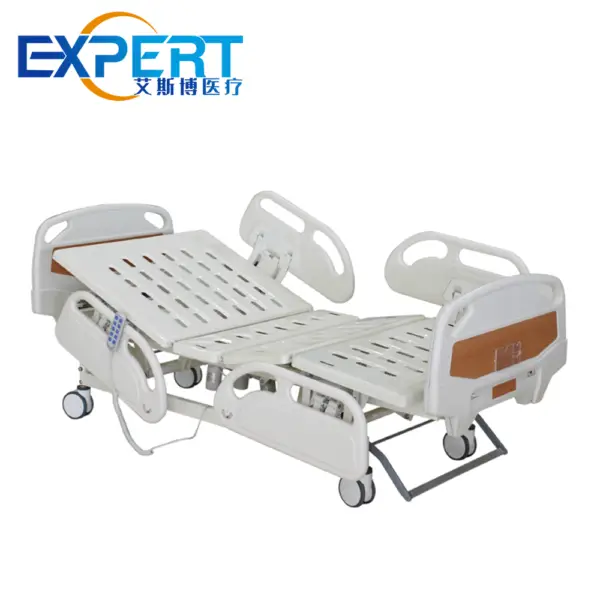Адрес
304 North Cardinal St.
Дорчестер-центр, Массачусетс 02124
Часы работы
С понедельника по пятницу: с 7:00 до 19:00.
Выходные: 10.00 - 17.00
Добро пожаловать в мой блог!
Прежде чем мы углубимся в содержание, если вы заинтересованы в нашей продукции или у вас есть какие-либо вопросы, пожалуйста, посетите наш Свяжитесь с нами на странице на сайте. Наша команда готова помочь вам с вопросами, заказами и любой необходимой поддержкой.
Итак, давайте начнём наше совместное путешествие. Надеюсь, вы найдете здесь познавательный, интересный и ценный контент.

Когда речь идет о медицинских учреждениях, понимание размеров больничных коек имеет решающее значение для обеспечения комфорта и безопасности пациентов. Больничные кровати — это не просто предметы мебели; это сложные устройства, предназначенные для удовлетворения различных медицинских потребностей. В этом всеобъемлющем руководстве мы рассмотрим различные типы больничных коек, их размеры и то, как выбрать правильную кровать для вашего учреждения или потребностей домашнего ухода.
Больничные кровати бывают разных типов, в основном ручные и электрические.
Специальные кровати предназначены для лечения определенных медицинских состояний и потребностей. Примеры включают:









При выборе больничной кровати важно понимать конкретные размеры. Ниже приведены некоторые ключевые размеры, которые следует учитывать:
При измерении больничной койки следует учитывать следующее:
| Тип кровати | Длина (дюймы) | Ширина (дюймы) | Регулировка высоты (дюймы) | Грузоподъемность (фунты) |
|---|---|---|---|---|
| Стандартная ручная кровать | 80 | 36 | 15 – 30 | 250 |
| Стандартная электрическая кровать | 80 | 36 | 15 – 30 | 350 |
| Бариатрическая кровать | 80 | 48 | 15 – 30 | 600+ |
| Детская кровать | 60 | 30 | 15 – 30 | 150 |
В этой таблице представлен сравнительный обзор различных типов больничных коек, с указанием их размеров и грузоподъемности. Понимание этих характеристик имеет решающее значение для принятия обоснованного решения.

Понимание конкретных потребностей пациента имеет решающее значение при выборе больничной кровати. Учитывайте такие факторы, как мобильность, вес и любые медицинские состояния, которые могут повлиять на выбор кровати.
Измерьте доступное пространство в комнате, чтобы убедиться, что больничная кровать может свободно разместиться. Не забудьте учесть любое дополнительное оборудование, например, инвалидные коляски или ходунки, которые, возможно, придется хранить в той же зоне.
Перед покупкой рекомендуется проконсультироваться с медицинскими работниками, которые могут дать представление о том, какой тип кровати лучше всего подойдет для нужд пациента. Их опыт поможет вам выбрать кровать с подходящими характеристиками и размерами.
Понимание больничная койка measurements is essential for ensuring patient safety, comfort, and proper care. By considering the various types of beds, their dimensions, and specific patient needs, you can make an informed decision that enhances the quality of care provided. Whether in a hospital, nursing home, or home care setting, the right hospital bed can significantly impact patient well-being.
Каков стандартный размер больничная койка?
Стандартный размер больничной кровати обычно составляет 80 дюймов в длину и 36 дюймов в ширину. Однако ширина может варьироваться в зависимости от типа кровати, при этом бариатрические кровати шире.
Как определить грузоподъемность больничной койки?
Грузоподъемность обычно указывается производителем и может варьироваться от 250 фунтов для стандартных кроватей до более 600 фунтов для бариатрических кроватей. Всегда проверяйте характеристики перед покупкой.
Регулируются ли по высоте больничные кровати?
Да, большинство больничных кроватей оснащены функцией регулировки высоты, что позволяет медперсоналу поднимать или опускать кровать на высоту от 15 до 30 дюймов для облегчения доступа к пациенту.
Можно ли использовать обычный матрас на больничной койке?
Использование обычного матраса на больничной кровати, как правило, не рекомендуется, поскольку больничные кровати имеют особые конструкции и размеры, которые необходимо подбирать для обеспечения безопасности и комфорта. Всегда используйте матрас, предназначенный для больничных кроватей.
Что следует учитывать при покупке больничная койка для домашнего использования?
Учитывайте особые медицинские потребности пациента, доступное пространство и предпочитаете ли вы ручную или электрическую кровать. Консультации с медицинскими работниками также могут помочь вам сделать лучший выбор.
